Robert Cornelius snapped the world's first-known selfie nearly 200 years ago — proving human vanity moves as fast as technology
Philadelphia entrepreneur Robert Cornelius photographed a self portrait in October 1839, just weeks after Americans learned photo technology even existed. Curiosity with ourselves has made the selfie a common and complex modern art form.
A Philadelphi photo pioneer proved that human vanity is limited only by the technology to express it.
Robert Cornelius shot the world’s first-known self-portrait photograph — the world’s first selfie — in October 1839.
He captured the image, both mundane and momentous, only weeks after the advent of photography itself.
The fetching 30-year-old man wears a coat with, by today’s fashion standards, an outrageously large, high collar beneath dark mussy bedroom hair and darker, moody skeptical eyes.
His peepers betray a classic feature of the modern selfie: they look askance, as if not sure the best angle to stare at the lens.
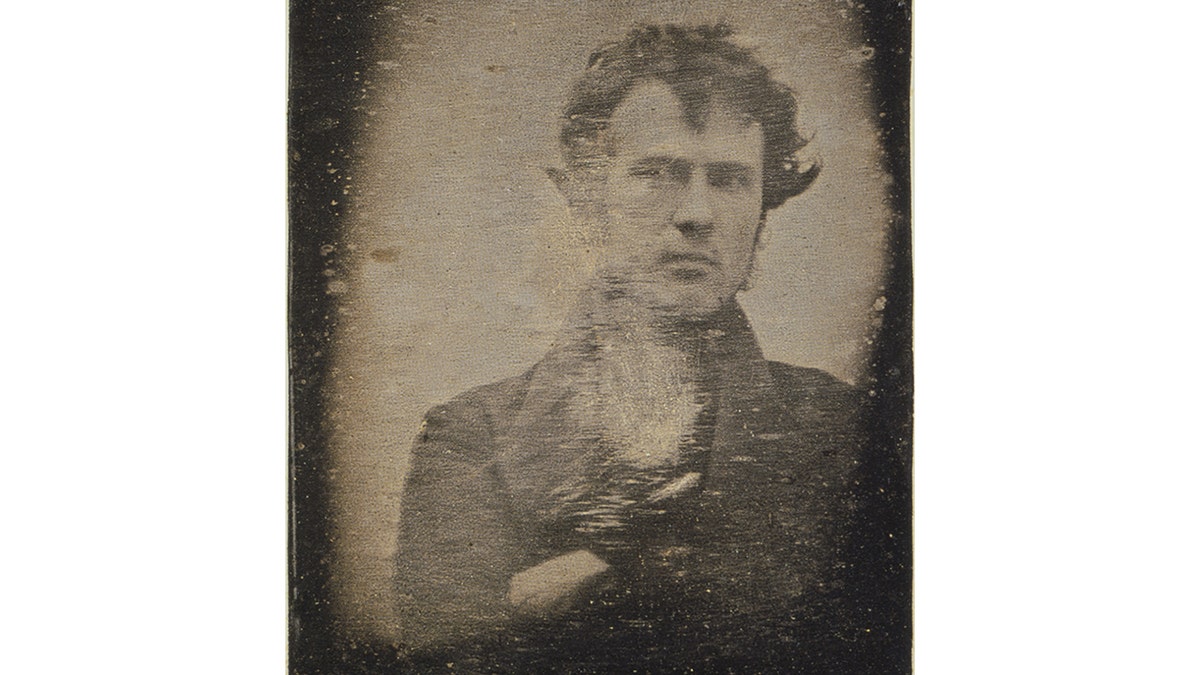
The self-portrait of Robert Cornelius (1809-1893), the very first daguerreotype taken in North America. (Robert Cornelius/Getty Images)
Selfie trendsetter and Rhode Island Monthly magazine editor Jamie Coelho was smitten.
"He's looking pretty fly!" she told Fox News Digital, upon seeing the image for the first time this week.
Cornelius, she imagines, was feeling very good about himself that day — peacocking another common signature of the selfie arts.
"He's looking pretty fly!" – Selfie trendsetter Jamie Coelho
"He’s a handsome dude," said Coelho, who founded @prettypowderroomselfies on Instagram this year.
"Like a modern-day hipster. He’s like, ‘Look at me. Look at my outfit today.'"
Cornelius’ snap is not only the first-known selfie; it’s one of the oldest images of a human being ever captured on film.
Words on the back of original image proclaim, "The first light picture ever taken."

Rhode Island Monthly magazine editor Jamie Coelho chronicles the bathroom selfie trend on Instagram (@prettypowderroomselfies). Restaurants and hotels now design bathrooms, she said, to double as studios for self-portraits. (Courtesy Jamie Coelho @prettypowderroomselfies on Instagram)
Human obsession with its own form is nearly as old as the species itself.
Anthropologist Nicholas Conrad discovered a headless but buxom female statuette carved from mammoth ivory tusk in in Germany in 2008.
Dubbed the Venus of Holhe Fels, it is the oldest known artistic rendering of a human — up to 40,000 years old.
MEET THE AMERICAN WHO INVENTED SLICED BREAD: OTTO ROHWEDDER, HARD-LUCK HAWKEYE
The figure "is about sex, reproduction … and extremely powerful depiction of the essence of being female," Conrad said of his discovery.
The earliest catalogs of human stories, however, warn of the dangers of self-obsession — none more famous than Narcissus of Greek mythology.
Mesmerized by his own reflection in the water, he spurned love for others, even the advances of alluring nymph, Echo.
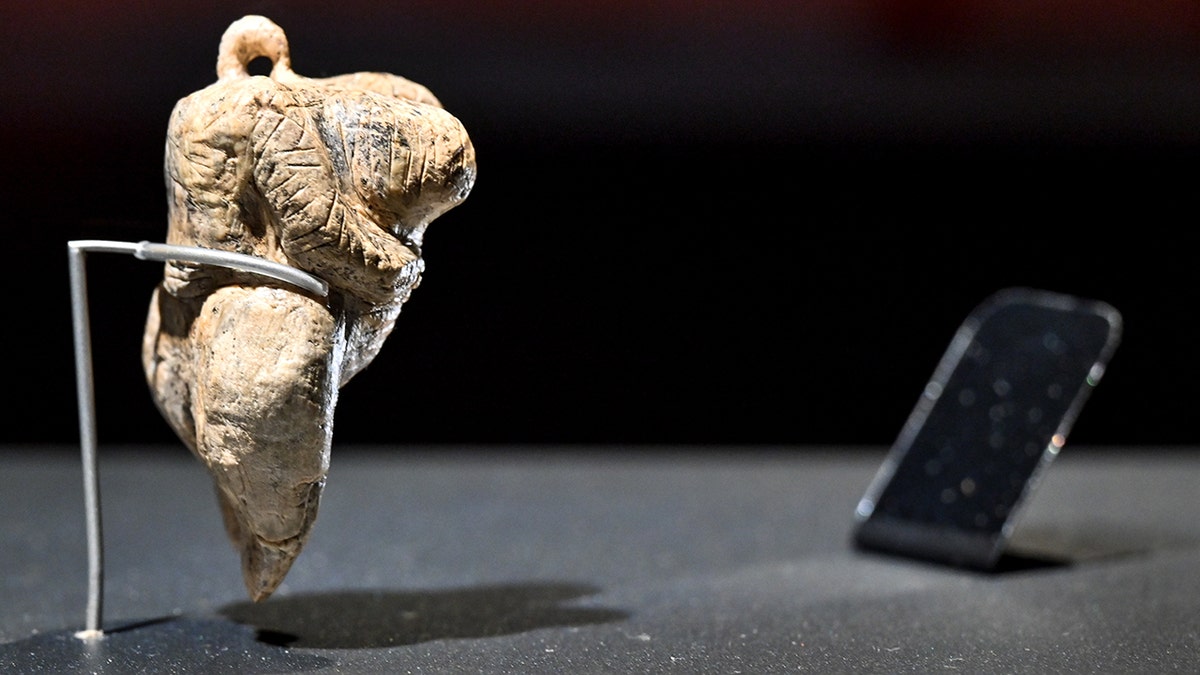
The oldest figurative representation of a human being in the world stands in an illuminated display case. The so-called Venus of the Hohle Fels is about six centimeters high, made of mammoth ivory and around 40,000 years old. (Felix Kästle/picture alliance via Getty Images)
"He cannot move, for so he marvels at himself," Roman poet Ovid wrote of Narcissus staring at his reflection.
Among other lessons, the story of Narcissus indicates that human vanity flowered even without human technology.
Ovid added, "All that is lovely in himself he loves, and in his witless way he wants himself."
‘Dynamic time’
Robert Cornelius was born in Philadelphia on March 1, 1809, to Christian and Sarah Cornelius.
His father was a Dutch immigrant from Amsterdam; his mother’s birthplace is apparently unknown.
There are also conflicting reports of her maiden name, either Soder or McGowan.

Robert Cornelius took the world's first selfie in Philadelphia in 1839, then later opened one of the world's first photo studios at the corner of 8th and Lodge Streets. View from his studio. (Library of Congress/Public Domain)
Cornelius was, it appears, instinctively curious with the ambition, he would later prove, of an innovator and entrepreneur.
"After receiving an ordinary education, early in life he entered in the business of his father … in the manufacture of lamps," the American Journal of Photography wrote in an 1892 biography.
"The 1830s were a dynamic time in photographic experimentation." – Conservation Center for Art & Historic Artifacts
The City of Brotherly Love was bursting with intellectual energy and the dynamism of the new nation it helped forge only a few decades earlier.
Benjamin Franklin already put Philadelphia on the global map as a center of curiosity and innovation in the years before the American Revolution, with discoveries that made him the darling of London science and society.
"The 1830s were a dynamic time in photographic experimentation," reports the Conservation Center for Art & Historic Artifacts in Philadelphia.

A daguerreotype camera made by Alphonse Giroux in Paris in 1839 and a portrait of Louis Jacques Mandé Daguerre are exhibited by the French Company of Photography. Shot taken around 1980. (Alain LE TOQUIN/Gamma-Rapho via Getty Images)
"On either side of the Atlantic, scientists and amateur hobbyists alike traded techniques and guarded discoveries as they sought to capture the world around them in a still image."
The breakthrough moment came from France in the summer of 1839. Artist Louis Daguerre perfected a process to capture images on sheets of silver-plated copper.
"The publication of Daguerre’s discovery in August 1839 sent a shockwave across the burgeoning photography community," added the Conservation Center.
It took only a few weeks for a curious American with access to silver and copper at the family business to turn the camera on himself.
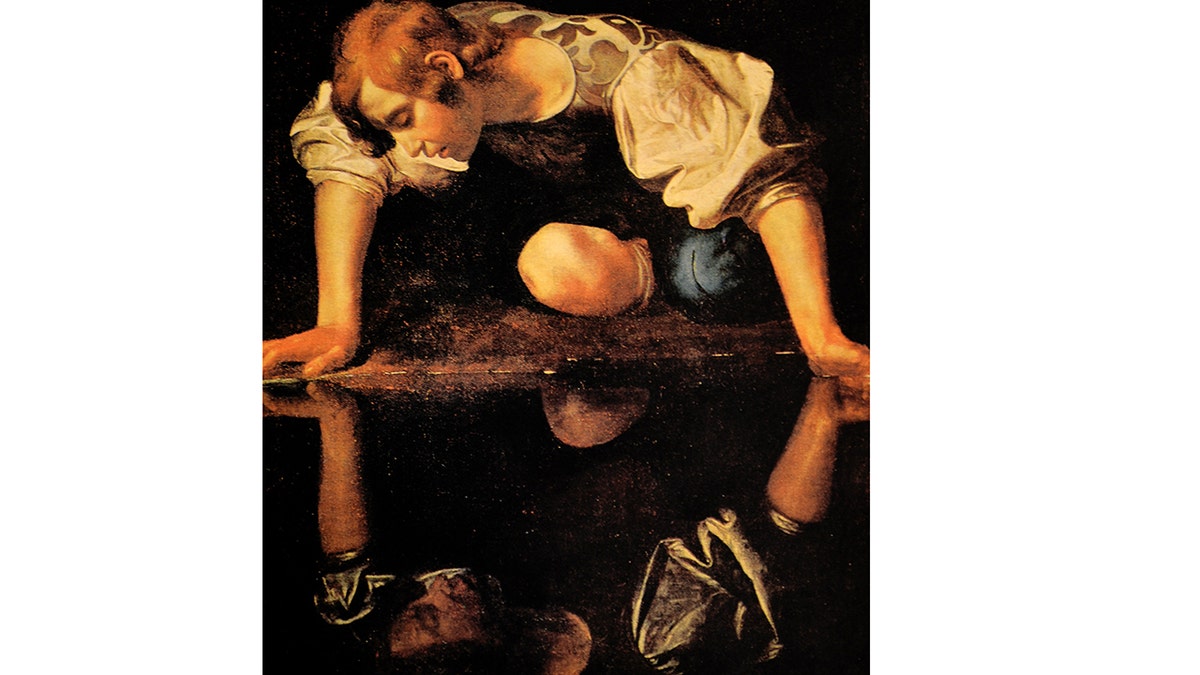
The story of Narcissus, a handsome youth who falls in love with his own reflection, unable to tear himself away, and sequently dies. "Narcissus" by Michelangelo (1571-1610). (Universal History Archive/UIG via Getty images)
"In October 1839, in the backyard behind his family’s store, Cornelius took what is today heralded as the first 'selfie" — the world’s first photographic self-portrait, in which a hazy, off-center Cornelius looks down lens," the Conservation Center reports.
Selfie invades our most intimate spaces
The vanity and curiosity that inspired Cornelius to instinctively capture his own likeness has spawned a exponential proliferation of ourselves as art form in the nearly 200 years that followed.
The desire has transcended the bounds of earth.
Astronaut Michael Collins took the first space selfie aboard the Gemini 10 mission in July 1966; a future crewmate on the Apollo 11 first moon-landing mission one-upped Collins a few months later.
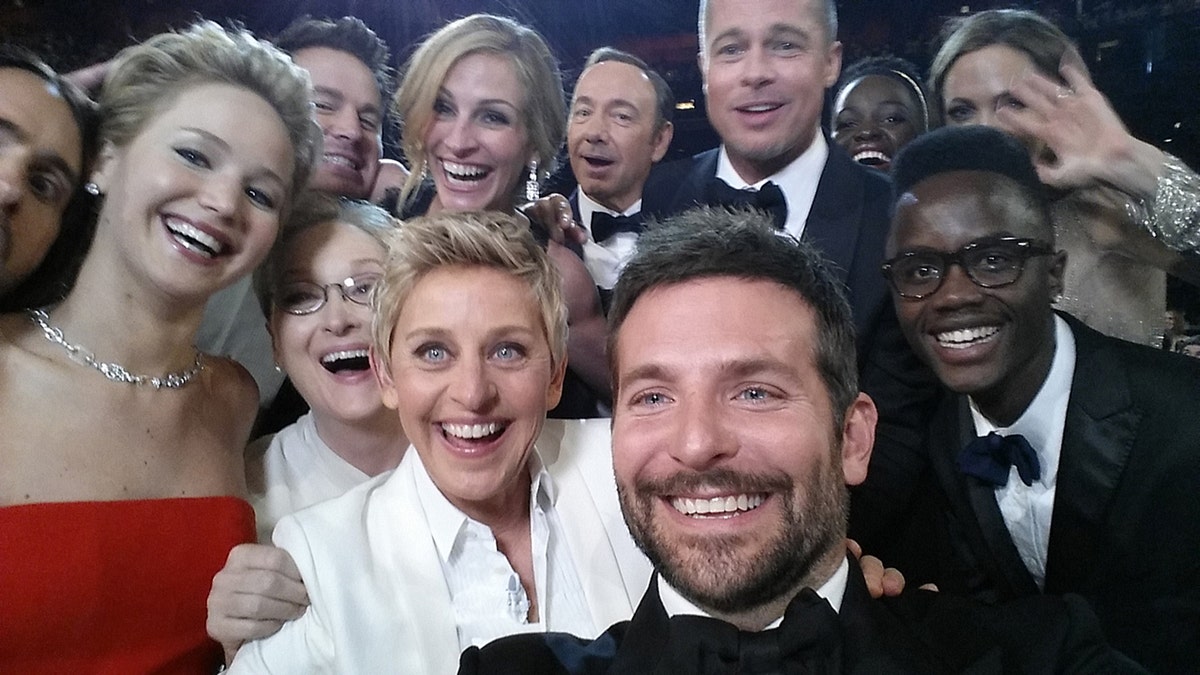
Host Ellen DeGeneres poses for a selfie taken by Bradley Cooper with (clockwise from L-R) Jared Leto, Jennifer Lawrence, Channing Tatum, Meryl Streep, Julia Roberts, Kevin Spacey, Brad Pitt, Lupita Nyong'o, Angelina Jolie, Peter Nyong'o Jr. and Bradley Cooper. The 86th Annual Academy Awards were held at the Dolby Theatre on March 2, 2014, in Hollywood, California. (Ellen DeGeneres/Twitter via Getty Images)
Buzz Aldrin snapped the first spacewalk selfie in November during the Gemini 12 mission.
The advent of smartphones in the 21st century elevated the ancient instinct to stare at ourselves in the water into an instant capability and constant temptation.
The cellphone selfie had its coming-of-age party at the 2014 Academy Awards.
"The (Ellen DeGeneres/Bradley Cooper) star-packed shot tops Twitter's list of most-tweeted entertainment moments with nearly 255,000 tweets per minute."
Bradley Cooper grabbed Ellen DeGeneres' phone and snapped a celebrity-all star pic that included Brad Pitt, Meryl Streep and Jennifer Lawrence.
The shot lit up global social media and was widely proclaimed the most famous selfie in history.
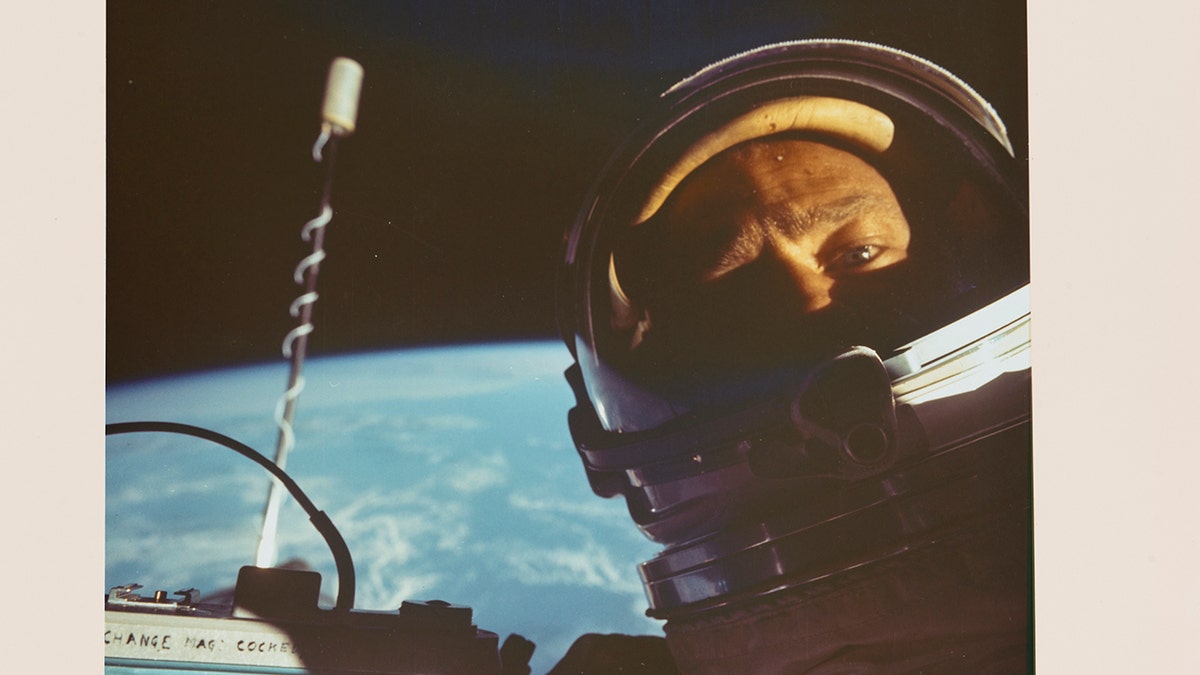
Astronauts Edwin "Buzz" Aldrin Jr, pilot of the Gemini 12 spacecraft, with a JA Maurer camera during a period of EVA (Extravehicular Activity), 12th November 1966. (Space Frontiers/Getty Images)
"Eight months later, the star-packed shot tops Twitter's list of most-tweeted entertainment moments with nearly 255,000 tweets per minute," The Hollywood Reporter shared in December 2014.
"With more than 3.3 million retweets, it was also the most retweeted post on the social network this year."
WHY ARE MEN OBSESSED WITH THE ROMAN EMPIRE? HISTORY EXPERT SAYS IT'S A ‘VERY AMERICAN THING’
Even the hopelessly untrendy now knew the phrase for the image first captured by Cornelius 175 years earlier.
Selfies are now a visual art form unto themselves with entire social-media platforms, such as Snapchat, and even their own subgenres.
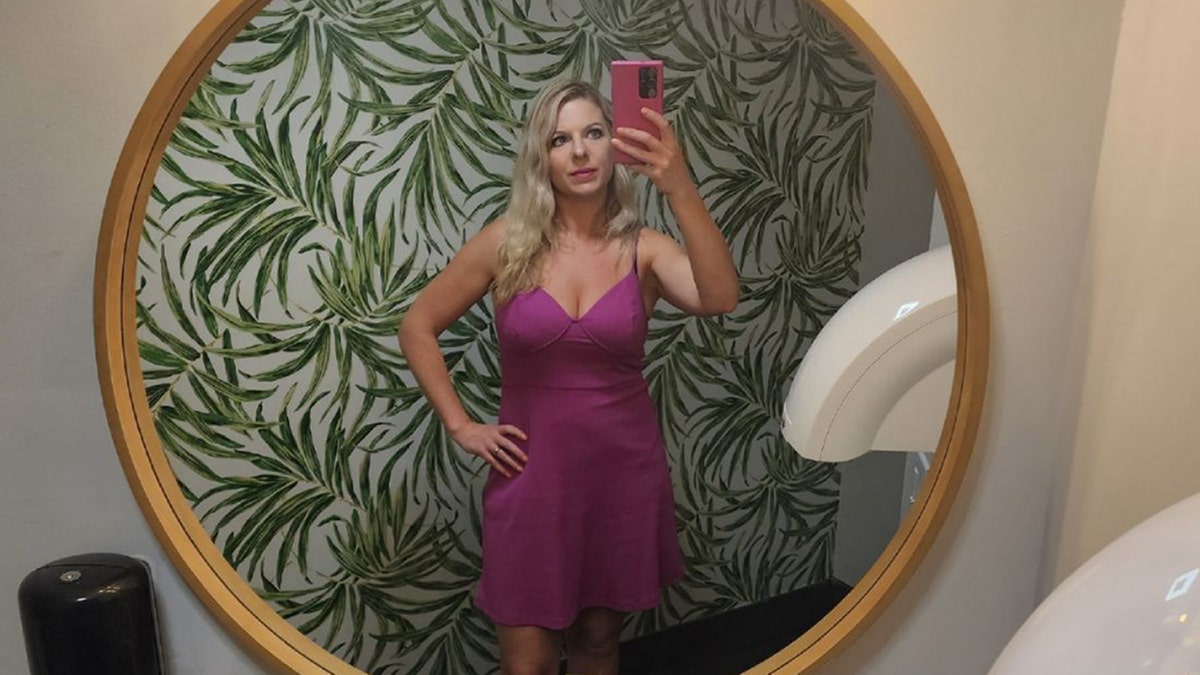
Rhode Island Monthly magazine editor Jamie Coelho in the restroom at the Patio on Broadway in Providence. Coelho created the Instagram @prettypowderroomselfies in 2023 to capture the fashions she and her friends wore, while highlighting the decor of restaurants, theaters and nightspots. She says public establishments are designing restrooms to be selfie-friendly. (Jamie Coelho/@prettypowderroomselfies)
The celebrity selfie, the mirror selfie and the "bedfie" — the selfie while lying in bed — have all inspired pop-culture and social media trends.
Cornelius-admirer Coelho is at the forefront of one of the newest.
Her Instagram is devoted to the emerging art of the bathroom selfie, so prominent these days that she says it is inspiring American restaurants and hotels to invest in camera-ready restrooms.
"They call it taking a selfie … I call it taking a lonely." — Comedian Sebastian Maniscalco
She cites Gift Horse in Providence, Rhode Island, Sugarfish in Miami, Florida and the Beekman Hotel in New York City among them.
The images, many submitted by followers, pair personal fashion with the latest in loo decor.
Her posts are pretty, confident and vulnerable all at once.
They are also a sign that the temptation for people to show themselves off has invaded even the most intimate corners of daily life.

Comedian and actor Sebastian Maniscalco speaks during Lionsgate exclusive presentation at Caesars Palace during CinemaCon 2022, the official convention of the National Association of Theatre Owners, on April 28, 2022, in Las Vegas, Nevada. (Gabe Ginsberg/WireImage)
Humans snap nearly 100 million smartphone selfies every day, according to various industry estimates.
The obsession with "self" has inspired a cultural backlash.
"Something's wrong in the country. Where do people get the time? … Taking a photo of yourself!?" comedian Sebastian Maniscalco barks with acidic condemnation in an outrageous viral video clip from his stand-up act.
"American millennials spend about 38 hours annually snapping self-portraits … and 33 hours attending social events." — Bureau of Labor Statistics
"They call it taking a selfie. I can’t even say the word without sweating. I can’t stand the word. I call it taking a lonely."
Selfies may be starting to take a social toll, too.
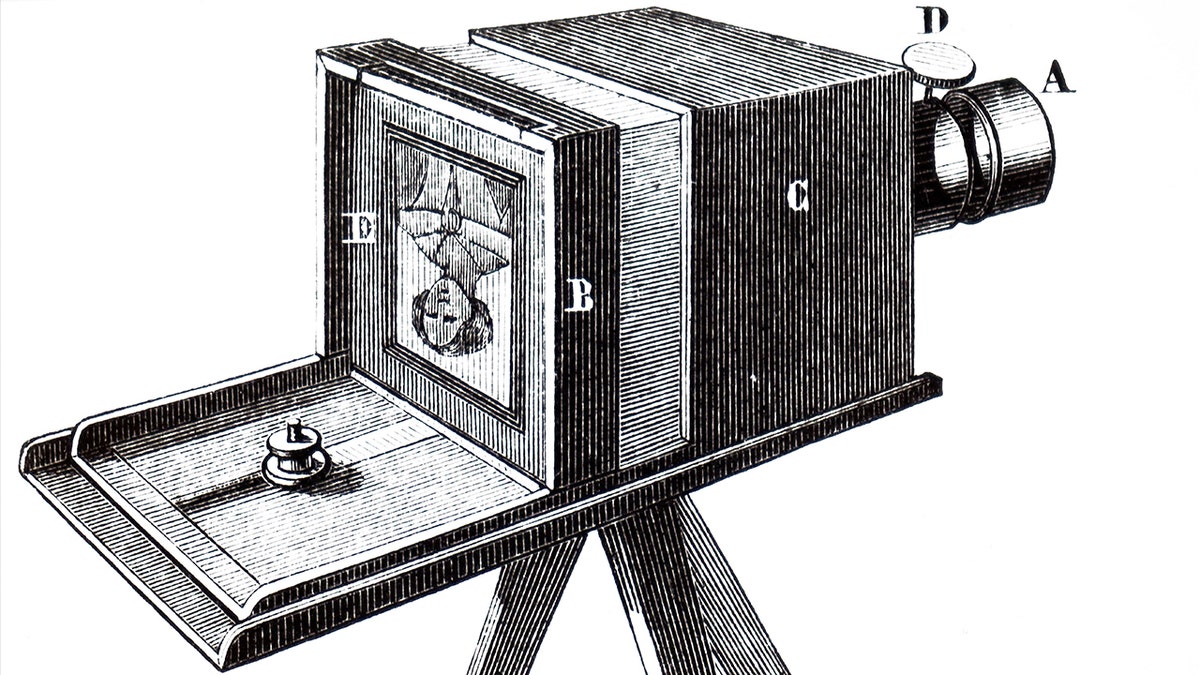
Engraving depicting a camera used to take daguerreotype photographs invented by Louis Daguerre. Louis Daguerre (1787-1851) a French artist, inventor and photographer. Dated 19th Century. (Universal History Archive / Universal Images Group via Getty Images)
The Bureau of Labor Statistics reported this year that American millennials (ages 18-34) spend about 38 hours annually snapping self-portraits.
That’s more time they spend walking (22 hours), managing personal finances (11 hours) or, perhaps most damningly, attending social events (33 hours).
Interest in ourselves appears to come at the expense of interest in others, proving the ancient warnings of Narcissus were wisdom more than mythology.
‘Vanity and self-preservation’
Robert Cornelius died in Philadelphia on Aug. 10, 1893. He was 84 years old.
He’s buried in Laurel Hill Cemetery, a National Historic Landmark overlooking the Schuylkill River.

Entrepreneur and America photography pioneer Robert Cornelius of Philadelphia (1809-1983). Cornelius is credited with snapping the world's first-known selfie in 1839. (Public Domain)
Cornelius "in connection with Dr. Paul Beck Goddard … opened the first studio for photographic (daguerreotype) portraiture in the world in the northeast corner of Eighth Street and Lodge Alley (now Jayne Street)," the American Journal of Photography wrote in its 1892 biography.
"He is also credited with publishing the first photographic advertisement in the history of art, which appeared in the Philadelphia Public Ledger."
Cornelius, according to various reports, appears to have popularized the new art form of photography by shooting Philadelphia's movers and shakers in his studio.
His time in photography was only short-lived. He closed the studio in 1843.
He went on to become a leading innovator in the power and light industry.
CLICK HERE TO SIGN UP FOR OUR LIFESTYLE NEWSLETTER
His impact on photography has long outlived his few years at the forefront of its evolution.
His artistic curiosity in himself presaged a movement that's consumed global culture. The ease at which smartphones and social media boost the ease and temptation of self-admiration is changing human behavior.
"In the age of social media, the term narcissism keeps coming up in our feeds more and more frequently," archaeologist Antonis Chaliakopoulos wrote in 2021 for TheCollector.com, a Canadian-based community of humanities scholars.
"Narcissus’ myth can remind us that obsessive self-love is not something new and certainly not healthy."
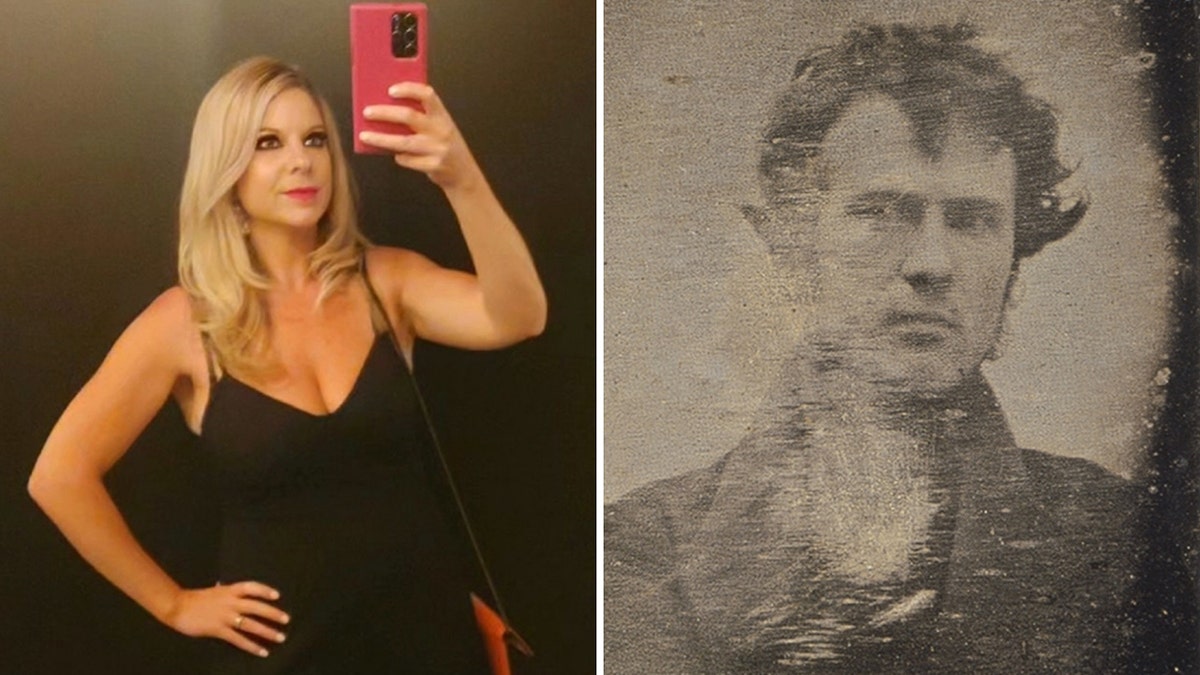
Robert Cornelius, right, snapped the world's first-known selfie in Philadelphia in 1839. Jamie Coelho, left, chronicles one of the newest selfie trends in Instagram @prettypowderroomselfies, which she launched in 2023. (Courtesy Jamie Coelho/Getty Images)
Coelho, the modern-day selfie-trendsetter, believes Cornelius deserves adulation for advancing the deeply embedded human desire to capture our own image - and perhaps achieve some sort of immortality curated by ourselves.
CLICK HERE TO GET THE FOX NEWS APP
"I think the first photographic selfie relates to that vanity and self-preservation," she said.
"The selfie allows the taker to capture themselves when they look and feel their best and control the outcome of the photo before putting it out in the public eye."
To read more stories in this unique "Meet the American Who…" series from Fox News Digital, click here.

